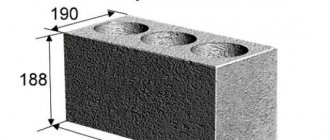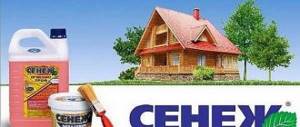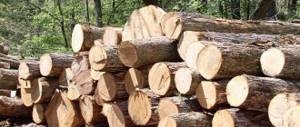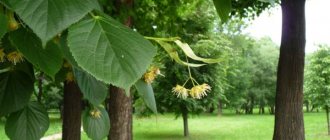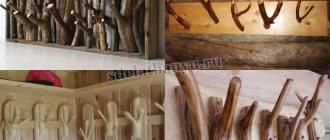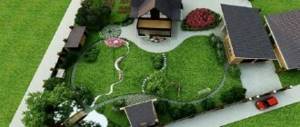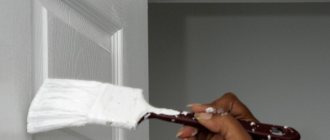Wood impregnation is one of the main components when building a house. The variety of impregnations on the market is enormous, so it is important to approach this issue responsibly. If you choose the wrong solution, there is a chance of getting damaged wood in the future, which will subsequently lead to the destruction of the house.
The main criterion for choosing impregnation is its purpose. Some formulations help fight fungi, moisture or insects.
There are many ways to help prepare wood impregnation with your own hands. At the same time, they are not inferior to branded analogues .
Types of impregnation
When deciding which antiseptic is best, first of all, you need to learn how to choose it correctly. Manufacturers produce formulations on a variety of bases and with a variety of functions.
But, in general, they are divided into means:
- on an oil, water and alcohol chemical basis,
- surface, neutral and deep penetrating impregnations,
- organic and chemical products,
- antiseptics and fire retardants,
- decorative and colorless.
All of them are used to protect wood. But some only create a surface layer, while others penetrate deeply into the structure and change its properties.
Oil impregnations have a varnish base, while water impregnations are based on compounds of sodium fluoride, boric acid and zinc chloride and penetrate the structure of the wood. Acrylic water-based compositions are popular and practically harmless, but alcohol impregnations quickly evaporate.
Antiseptics disinfect wood, fight fungus and mold, and fire retardants protect against fire. Decorative impregnations change the color of the wood, thereby achieving a decorative and beautiful coating, while colorless impregnations preserve the natural shade and texture of the wood.
Impregnation of a log house without coloring Source fire protection.com.ua
Introduction
Why did I start talking about antiseptic and making it at home? The whole point is that you can buy an expensive antiseptic at a hardware store and dilute it to the desired consistency, as we did at the enterprise. But the company had a lot of money and could afford such luxury.
But you can’t always afford such a luxury at home, so it’s better to buy inexpensive chemicals and prepare the solution much cheaper at home.
Preparing the solution at home is very effective when used in large quantities, for example in the construction of a house or bathhouse or some other buildings on a personal plot. In addition, it is better to buy three liters of chemicals than to buy a whole jar of the same Senezh for a much larger volume.
Impregnation selection criteria
Which wood preservative is best to choose depends on four criteria:
- environmental friendliness and harmlessness;
- purpose;
- composition;
- prices and efficiency of use.
Ecological cleanliness
Health safety becomes most important when treating areas where children are present. And in this case, the environmental friendliness of impregnation comes first among other factors.
Purpose
Based on the goals that need to be achieved when treating the surface, impregnations are divided according to their purpose.
For example, impregnation for boards against moisture and rotting, which of them is better indicated below, should protect the wood from fungi, mold and exposure to water. They are used in rooms with high humidity, such as baths or saunas.
There are also compositions that resist temperature changes well - frost-resistant. The addition of components that prevent combustion produces fire-retardant impregnations.
The introduction of pigments into the composition makes it possible to obtain decorative impregnations.
Impregnation of a log house with brown color Source www.s-stroy39.ru
Impregnations may also contain special UV filters and components that resist atmospheric influences. Most modern formulations have a combination of the listed qualities.
Compound
Experts advise giving priority to aqueous formulations. They are the most versatile, environmentally friendly, applied manually and mechanically.
When considering antiseptics, you should not ignore acrylic preparations. They have excellent water protection characteristics and are affordable. However, they have one drawback - the inability to work at low temperatures.
Acrylic-based impregnation Source kraski-kapitel.ru
There is one more component on the basis of which wood impregnations are produced - these are organic solvents. Such compositions have excellent protective properties, but caution should be exercised when using them due to the toxicity of many compositions.
When choosing which antiseptic for wood is better to choose, you can immediately select the appropriate color of the composition, since the impregnation can also have decorative functions and change the shade of the wood.
Consumption
When deciding which wood preservative is best, you should not lose sight of such an important indicator as material consumption. This is a common mistake many people make - paying attention to the price and not taking into account the consumption.
A high-quality composition provides reliable protection after applying a couple of layers, while cheaper ones require multi-layer coatings. As a result, purchasing high-quality compounds is more profitable than their cheap counterparts.
Application of impregnation Source tovarim.ru
The most common recipes
From copper sulfate at home
Compound:
- Copper sulfate 50% dry part;
- Technical sodium bichromate 50% dry part;
- A kilogram of dry matter is dissolved in 9 liters of water;
- Add 5.5 ml of a 9% solution of table vinegar to a liter of water.
Preparation:
Mix vitriol with sodium dichromate in 1 to 1 parts. Fill with water at a temperature of 50 degrees, since vitriol does not dissolve well in water, it needs to be heated. After this, mix everything thoroughly.
It is better to prepare in a closed canister, this way you can mix the solution better and there will be less harmful fumes.
Next, pour water with a 9% vinegar solution in the required concentration. A guide for you to prepare an antiseptic:
- 1 kg of copper sulfate;
- 1 kg sodium bichromate;
- For 2 kilograms of solution you need 18 liters of water;
- Add 18 * 5.5 ml = 99 ml of vinegar to the water (I would round it up and add 100 ml of table vinegar).
- One more thing, we heat water without vinegar and therefore subtract 4 liters from 18 liters, heat them and then add them to the vitriol. And already pour 100 ml of vinegar into 14 liters of water.
Application
Apply the antiseptic with a regular brush or broom. You can apply it with a rag, but in this case you must be protected with gloves, goggles and a respirator. Application to the surface should be in dry weather, outdoors, since internal application may
Safety:
It is necessary to observe safety precautions, since copper sulfate and sodium bichromate are hazardous to health. Therefore, when preparing the solution, you must wear gloves, goggles and a respirator. In addition, you need to wear pants (no need to prepare an antiseptic in shorts) and cover your torso with clothes. Watch the video of preparing the solution.
From iodine
You can look at such an antiseptic, for example, as Iodeseptan. It will no longer need to be diluted, since it is sold diluted in the required concentration. Suitable for interior work.
Others
I can also offer several options, such as hot water and salicylic acid in a ratio of 100 - 300 liters of water and one liter of acid. Another option is potassium dichromate and 4 - 6% sulfuric acid.
Wood antiseptic: which one is better?
When understanding impregnations, you should pay attention to where you need to apply them: outdoors or indoors. The choice of a quality composition depends on the answer to this question.
For interior work
What is the best antiseptic for wood, if it will be located indoors, choosing is quite simple if you know that it must meet high environmental safety standards. This is the most important criterion by which you should choose a product.
Let's consider several products of decent quality.
Pinotex Interior
Pinotex Interior impregnation from an Estonian manufacturer is an excellent antiseptic for interior woodwork and does its job well. Impregnation forms a reliable protective film on the surface. The composition is based on water and when used the impregnation does not emit a strong odor.
The composition is easy to apply and does not form streaks when applied. It is characterized by uniform absorption and excellent drying speed. After processing, the structure of the wood is clearly visible.
Pinotex color map Source yaroslavna-bel.ru
The surface is matte and does not leave fingerprints. Minor damage to the material is also hidden. The only drawbacks include the appearance of counterfeit goods on our market. But this only indicates the high quality of the impregnation.
Tikkurila Suri
This composition is produced by the famous Finnish company TIKKURILA. After impregnation of the surface, a semi-matte film is formed on it. The impregnation is based on acrylic and can be tinted. The range of application of the composition is quite wide. It is allowed to treat locations with high humidity such as baths and saunas.
Treatment with this impregnation preserves the original texture of the wood and allows you to maintain constant cleanliness of the finish. It has a fairly low consumption rate and dries quickly. The film provides excellent protection against dirt and water.
Primer "Tikkurila" Source static.onlinetrade.ru
"Aquatex Rogneda Extra"
This impregnation is a product of a domestic manufacturer. It includes components that allow for comprehensive protection. For this reason, the use of this impregnation is more profitable than the use of different paint and varnish compositions with different purposes.
Impregnation allows you to protect wood from rot, fungus or blue stains. In addition, it includes UV filters and components that block atmospheric influences - sun, water, etc. The composition is also a decorative paint and varnish material. Application is allowed not only on fresh surfaces, but also on those on which some kind of impregnation has already been applied.
The advantages include not only decorative aspects, but also high-quality latex protection. The downside is the long drying time and the pungent odor emitted by the composition during impregnation.
Neomid 430 Eco
This impregnation reliably protects the wood from moisture. It is not susceptible to being washed out by water during operation and is used in difficult conditions. Experts recommend this composition for impregnating wood that has direct contact with moisture - baths, saunas, fencing garden beds, and the like.
Antiseptic not only for internal, but also for external work Source neomid-500-450-440.rf
See also: Catalog of companies that specialize in facade and finishing materials.
After impregnation, the wood does not react to moss, fungi, rot and parasites. The validity period of the composition is very impressive, according to the manufacturer, about thirty-five years. The downsides include the pungent odor emitted during impregnation and the wood being painted gray with a hint of green.
"Tex Biotex Classic Universal"
This composition, produced by us, can with full confidence be considered a universal impregnation. Although the development is domestic and produced in our country, high-tech foreign-made equipment is used during production.
The composition contains a component that resists fungi, mold and rot. Despite the antibactericidal properties, the composition is used in locations with high air humidity. In addition, it is recommended to apply a primer before using the composition.
One of the advantages is the high artistic properties of the composition. However, there are also disadvantages - a pungent odor emitted during impregnation and a rather short-lived coating. Meanwhile, this impregnation is very affordable in price.
Changing the color of wood depending on the color of the impregnation Source vdvrus.ru
"Extra Aquatex with wax"
This impregnation gives a semi-gloss appearance when used and perfectly highlights the wood grain. It has high antibactericidal protection properties. The impregnation includes powerful UV filters and nanoparticles. They prevent products from fading when exposed to sunlight.
In addition, the composition contains natural oils of natural origin and wax. These components not only provide effective artistic properties, but also protect the surface from cracking. During operation, the impregnation does not emit any pungent odors, but the protective layer is quite short-lived.
Wood varnish - beautiful protection
Varnishes are one of the most common coatings for wood, especially when it comes to interior decoration. The varnish coating not only protects the surface from wear and damage, but also performs a decorative function by highlighting the wood texture and giving it different shades. The substances are made on the basis of resins with the addition of various ingredients. Varnishes belong to film-forming coatings. When the solvent or any other liquid component evaporates, the resins harden to form a protective layer.
According to the degree of light reflection, varnishes are divided into high-gloss, glossy, semi-gloss, semi-matte and matte.
- Resin and oil varnishes are used for interior work, not suitable for floors. Their main components are resin and oil. Oil varnishes can be oily or thin depending on the concentration.
- Alkyd varnishes are made on the basis of alkyd resins and contain substances that accelerate drying (driers). The paint product contains white spirit, so the smell of it will be felt in the room after coating. At the same time, alkyd varnish has good water resistance and is suitable for flooring. Also classified as alkyd is alkyd-urea varnish.
| Applying varnish to furniture using a brush | When processing parquet, it is convenient to use a roller with a long handle |
- Formaldehyde varnish – the binding component is formaldehyde resin, which can withstand high loads and has good adhesion to the coating. However, formaldehyde can have harmful effects on the human body.
- Epoxy varnish is made from epoxy resin, is suitable for floors and can withstand high impact loads, so is often used in sports areas or rooms with high traffic.
- Polyurethane varnish is waterless and forms a durable, reliable coating with good adhesion. It dries quickly, but during the drying process it is necessary to exclude all contact with water.
- Acrylic varnish is applied using water, has good fire-resistant properties, but is characterized by poor wear resistance.
The procedure for applying varnish depends on the surface and composition of the substance. The most commonly used is a wide brush or roller.
Video description
The video shows comparative tests of impregnations:
"ECOHOUSE"
This composition is distinguished by a very affordable price, but despite its availability, it also meets high quality indicators. The impregnation is highly environmentally safe and is not based on organic solvents.
The composition resists the appearance of fungal diseases on wood. Moreover, it actively treats existing lesions. Impregnation does not change the texture of the surface and does not impede the penetration of air into it. It has excellent adhesion, so after impregnation the wood can be coated with any paint and varnish materials.
The disadvantages of the composition include significant consumption during impregnation and a long drying period. Also, when opened, the composition has a pungent odor. However, this is compensated by a high level of protection and an affordable price.
What is impregnation and why is it needed?
Impregnations are commonly called liquid mixtures designed to protect wood from the harmful effects of moisture, sunlight, temperature changes, as well as harmful insects and other organisms (fungus, mold).
The first impregnations appeared quite a long time ago. People who use wood as a building material have always looked for ways to protect it from adverse weather conditions and various pests. Thus, in Rus', for a long time, wood was coated with linseed oil, waxed with beeswax or coated with tar. Oiled rock became less susceptible to rotting, but continued to require regular maintenance and renewal of the protective layer.
Modern compositions are most often made on the basis of complex chemical compounds and are designed for 18 different classes of operation. They are absorbed quite easily, last a long time and do not change the appearance and texture of the wood (except for cases where decorative purposes are set before impregnation). Despite their synthetic origin, today's products are quite environmentally friendly and safe. When properly selected, they fully cope with the complex task of protecting various species and, among other things, are able to protect the material from fire, as well as make the appearance of the wood even more attractive and impressive.
Fire retardants for fire protection
When talking about wood as an excellent building material, one should not forget about its property of high flammability. For this reason, it would not be entirely correct to ignore compounds that protect wood from burning.
NEOMID 450
This composition is an effective method of protection and is intended for both indoor and outdoor use. The impregnation components, in contact with wood, produce a material that does not ignite or burn well.
Also, the impregnation is endowed with high levels of antibactericidal protection. The manufacturer guarantees seven years of fire resistance and ten years of resistance to fungal diseases. Available in both bleached and tinted versions.
A clear advantage of the composition is double surface protection. The only downside is the long drying time - about two weeks.
"Senezh Ognebio Prof"
This impregnation is also a whole complex for impregnating wood. In addition to fire protection, it creates a good barrier to the penetration of biological threats. It is also protected from water and temperature fluctuations.
An example of color change under the influence of impregnation Source allegroimg.com
It is not advisable to process parts that have direct contact with the ground. It is worth noting that when the surface is impregnated, it changes its color somewhat, but the texture does not suffer. The composition is intended for impregnation of already affected areas of the surface.
When working with impregnation, there is absolutely no odor and it can be applied using any method. One of the disadvantages is the rather high consumption during use.
Features of impregnations for external and internal work
Impregnation for external and internal work generally faces the same tasks. The nuances that distinguish the compositions from each other include the possibility of their use at low temperatures, environmental friendliness, and resistance to ultraviolet radiation.
Thus, means for treating interior spaces and especially living space should increase the resistance of the fabric to high humidity and, as a result, rotting and not form a film that interferes with the natural air exchange of the material. Antiseptic properties should prevent the development of fungus, and bio-protection should protect against the appearance of insects. The set of tasks for internal impregnation also includes the need for decorative enhancement. The mixtures actively work to preserve the aesthetics of the texture and, if necessary, evenly change the color or tint the rock.
Since all functions must be performed with minimal harm to human health, the impregnation is based on the most natural ingredients: water, waxes, oils and gentle dyes. Particular attention is paid here to the release of harmful substances and the appearance of unpleasant odors.
Impregnation for exterior finishing requires more active protection, including not only protection from pests, fires and water-repellent properties. The extensive list of tasks also includes resistance to solar radiation, changes in atmospheric pressure and temperature, including resistance to freezing. Full protection and comprehensive interaction can extend the life of a tree for decades.
The complexity of the requirements for street impregnation determines its activity and aggressiveness, therefore long-term direct human contact with it is extremely undesirable.
Briefly about the main thing
In conclusion, we emphasize that in order to maximize the service life of wooden products, impregnation of them with the described or similar compositions is strictly mandatory. This is especially true for places with high air humidity or direct contact with soil and water.
When choosing impregnations, you need to pay attention to their purpose, whether they are used for interior or exterior work, environmental friendliness, cost-effectiveness of consumption and the main composition of which they are composed. On the market you can find suitable universal and high-quality products that will protect and preserve wood from moisture, fungi and insects, and from fire.
Ratings 0
Recipe for making wax impregnation
Ingredients: 25 g crushed rosin, 100 g wax, 50 g purified turpentine.
For cooking, it is better to use enamel dishes.
The wax must be melted in a water bath, then add rosin.
After that, turpentine is gradually poured in, which gives the wood a pleasant aroma and generally strengthens the surface.
For storage, it is recommended to pour the solution into a tin can. As a result of cooling, the impregnation acquires paste-like properties. It is best to apply the mixture using a piece of wool or cloth.
One of the most effective antiseptics is copper sulfate. The saturated solution provides reliable protection for boards buried in the ground. Its use on the territory of a personal plot during the harvest period is carried out with caution, because may cause severe poisoning upon contact with fruits.
Damage to wood from moisture
Under natural conditions, a living tree has a number of protective mechanisms that prevent the negative effects of fungus, insects and rodents. Once cut, the wood becomes vulnerable. There is a loss of density and destruction of the structure. The main enemy that accelerates these processes is moisture, which creates a favorable microclimate for the development of fungus. The following factors can provoke putrefactive processes (mold):
- condensation in the room;
- increased level of importance;
- temperature changes;
- freezing;
- contact with ground;
- precipitation.
Damage to wood can be prevented by treating its surfaces. This is done at the stage of wood storage or directly during construction. Impregnations with antiseptic properties are used as a working solution.
Comparison of brands: which manufacturer to choose?
There are a large number of antiseptic protective agents on the market, and choosing among manufacturers can be very difficult. Funds can be divided into 3 categories:
- Budget ones are “Senezh”, “Aquatex”;
- Middle class – “Tikkurila”, “Belinka”;
- Professional – “Dulux”, “Teknos”, “Woodworks” and others.
According to the rating, they are placed this way: the more expensive the product, the higher quality it will be and will last longer.
There are a large number of antiseptic protective agents on the market, and choosing among manufacturers can be very difficult.
An antiseptic for wood is a mandatory element of the coating so that it lasts longer and biological formations harmful to health do not appear on it. You need to choose a product based on the stage of work, budget, and operating conditions. Having made the right choice, you can be confident in the safety of the surface.
How to prepare bioprotection for wood at home
You can make an antiseptic for a wooden surface with your own hands. A popular recipe is the use of bitumen and gasoline (diesel fuel). It is also necessary to prepare a metal container, a metal spatula and support elements for fixing the container above the fire.
It is advisable to work outside, it will be safer. Perform the following steps:
- Bitumen is placed in a prepared container.
- She is transferred to the fire.
- The bitumen is heated until completely dissolved; with a spatula, mix it well until it has an even consistency.
- Continue the process until a weak viscosity is obtained, then remove the containers from the heat.
- When the bitumen has cooled, gasoline is added to it in small portions to make it easier to mix.
- Apply the product with a brush or roller.
Differences between hand-made antiseptics and ready-made ones from the factory
Self-prepared compositions have a number of positive aspects when compared with purchased impregnations: inexpensive, oil and bitumen compositions have a good degree of efficiency, less toxicity.
Factory ones are better in quality. They are easy to use and do not require long cooking. They selectively affect the tree.
A popular recipe is the use of bitumen and gasoline.
Top 10 wood impregnations for outdoor use
The most popular area of application for wood impregnations, especially protective impregnations, is external treatment. Most often they are used for processing the facades of wooden buildings, for opening lining or fence boards, processing doors and window frames, decking boards and garden furniture.
To answer the question of which one is better and which one is worse suited to your requirements, you should consider the main positions presented on the Russian market. We have compiled our rating of impregnations, which will help you choose a worthy product.
Table. Impregnations for outdoor use
Table.
Exterior impregnations After impregnation treatment, silicone paint or glaze may be required for additional weather protection. If we continue our TOP 10, we should mention the following manufacturers:
- Biotex;
- Veres;
- Neomid;
- Wood Protect;
- Lapis lazuli;
- Tex.
The assortment usually includes both colorless compositions and products with a variety of shades, for example, mahogany or rosewood. If you need fireproof impregnation, you can buy that too, only the price will be slightly higher.
Impregnations for wood
View varnishes and coating compositions for wood
Famous manufacturers
Below is a list of manufacturing companies whose products are in greatest demand.
Belinka
Country of origin: Slovenia.
Engaged in the production of impregnations for the protection and decoration of wood. This:
- transparent antiseptics;
- penetrating primers;
- azure multilayer impregnation with the addition of wax;
- azure decorative impregnations;
- paints.
Belinka has official representative offices throughout Russia.
Aquatex
A Russian company that produces several types of combined impregnation compositions:
- “Aquatex Extra” - based on wax, oil;
- “Aquatex primer antiseptic” is a non-washable antiseptic;
- "Aquatex" - decorative with bioprotection and others.
Each one contains an ultraviolet filter.
Aquatex does not produce products with biopyrene protection.
Tikkurila
The Finnish concern produces many series of paint and varnish products. Products with antiseptic protection, against insects, ultraviolet radiation. They have an environmentally friendly composition. Some antiseptics can be tinted.
Senezh
Russian trademark.
Specialization - production of impregnations for processing wood and decking boards.
The list of products includes:
- biopyrenes;
- preservative solutions;
- antiseptics;
- decorative;
- protective compounds.
There are tinted solutions. The price is affordable.
NEOMID
Russian manufacturing company.
The products are considered one of the best on our market for protecting wood and decking boards from fire and moisture.
On average, antiseptic protection lasts 10 years, and against fire – 7 years.
To control the quality of processing, a tinting pigment is included.
Can be used in residential buildings, bathhouses, gazebos, summer kitchens.
Why wood needs to be protected
The fact that wood products require protection has been known for a long time. Water has a negative impact on the structure of the wood; as a result, rotten areas may appear, which will significantly reduce the service life of the item. Therefore, it is simply necessary to treat the wood against rotting.
In addition, the formation of mold on the surface of the house is dangerous for human health. There are different types of mold, just like fungi. Mold patches that form on a wooden base have a very bad effect on the human body; they quickly spread over the surface.
Mold microspores, which form due to lack of good ventilation in the house, high humidity, construction of a structure from poorly dried logs, etc., are volatile. Therefore, they easily enter the respiratory tract, and ultimately cause various types of diseases in humans. It is much easier to treat wood from rotting and moisture than to fight mold that has appeared, because it is tenacious and spreads quickly.
In ancient times, houses that were affected by mold were burned. Realizing that living in such a house is dangerous.
Of course, at the moment, many means have been invented that can effectively prevent the appearance of moldy areas and destroy existing ones. The main thing is to choose the right antiseptic substance.
It is much easier to treat wood from rotting and moisture than to deal with mold that has appeared.
